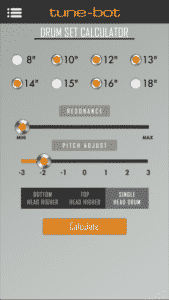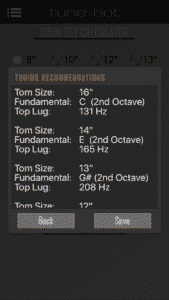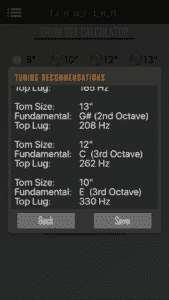Tuning Concert Toms
Posted on: April 23 2019 at 10:47 am
What are concert toms?
Concert toms are toms with only a batter head, no resonant head. Concert toms were extremely popular in the 60’s and 70’s.
Why use them?
Concert toms are very easy to tune, having only one head to deal with. You don’t have to worry about the relationship between batter and resonant head if there is no resonant head! For a concert tom the fundamental pitch is half the lug pitch in Hz, which makes it very easy to tune your drums to notes. You can get a really nice punchy sound from concert toms or you can get that very dead, dry sound that was so popular in the 70’s. In short, they have more attack and less resonance than 2 headed toms. Concert toms are easy to work with. An added benefit is that you can nest them inside each other making it easier to gig with. One of the reasons they were so popular is that they are easy to record. You can mic them from the bottom and still get a lot of attack without much resonance. Some negatives are that they are less resonant and you cannot control the resonance by adjusting the pitch of the bottom head. You cannot tune for feel with concert toms either.
How to tune them
If you are looking for that very dry 70’s sound it is quite easy to get. It is best to use a thicker head or one with a controlled sound like pin stripe, hydraulic, EC2, performance II, Studio X etc. Then you want to tune your head so that it is just tight enough to not have any wrinkles. Then check to make sure you get all the lugs tuned evenly. Next, hit the drum in the center. How does it sound? If it doesn’t sound quite right bring the drum up slightly. Also, try muffling the drum- a drum tuned this low often sound better with some muffling.
It is also very easy to get a melodic sound from your concert toms, especially with tune-bot. The same heads will work for these tunings but you probably won’t need to muffle. If going for the melodic sound I recommend tuning the drums higher than for the dry sound. If you know what note you want to tune your fundamental pitch to, tune your lugs one octave above that pitch and you will get the correct fundamental pitch. For example, if you tune your lugs to C3 (130Hz), your fundamental pitch will be C2(65 Hz). If you do not know what notes you want to tune your drums, I recommend using our drum tuning calculator. The app version of the calculator has tunings for single headed drums (website version does not). The tuning guide also helps with choosing notes. Here is a good tuning for 10”,12”,13”,14”,16″:

Make sure to select Single Head Drum


Tuning your Snare Resonant Drumhead
Posted on: November 12 2018 at 6:58 pm
The most common question I get asked is how to tune the resonant head on the snare. First of all you want the resonant head tuned much higher than the batter head. Otherwise you’ll have to tune the batter so high that the drum will sound and feel like you’re playing a piece of wood. Also, make sure you’re using a thin-ply resonant snare drumhead such as a Remo hazy Ambassador or an Evans 300 Snare Side. You’ll have trouble getting a sensitive snare response if you’re using too thick of a resonant head.
Start tuning by flipping the drum over and placing it upside down on the snare stand. I like to tune the resonant head with the drum on a stand; I find that it gives me a louder sound and better readings than when it’s placed on a drum stool. The next thing to do is loosen the snare strainer as far as possible. Then, slide a drum stick under the snare wires to keep them from touching the drumhead. The stick should be supported by the drum hoop as shown in the photo.
Clip the tune-bot near any lug except for the 4 lugs next to the snare bed. Now lightly mute the batter side head of the drum with your hand and hit by the lug beside the tune-bot. You should look for readings around 280 to 400 Hz. If you are getting readings under 50 Hz, your lug pitches are most likely over 400 Hz and you should switch to the Hi-Range (if you are using a tune-bot studio) or loosen your drum head. Readings around 200 Hz are most likely your fundamental pitch which isn’t the pitch you are looking for and shouldn’t be picked up if you’re muting the batter head.
Once you see a reading in the 280 to 400Hz range, you should press the Filter button and then you can stop muting the bottom head (the difference button if using the Gig model). Now you can go around from lug to lug and adjust the tension to match the pitches. For best accuracy you can move the tune-bot near the lug you’re measuring. One thing you may notice is that readings by the snare bed are lower than the readings at the other lugs. If your readings by the snare bed are 5-10 Hz lower than the rest, don’t worry about it, you likely will not be able to get them quite as high due to the snare bed.

